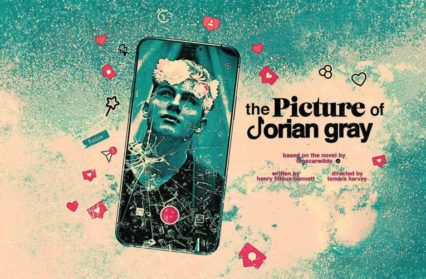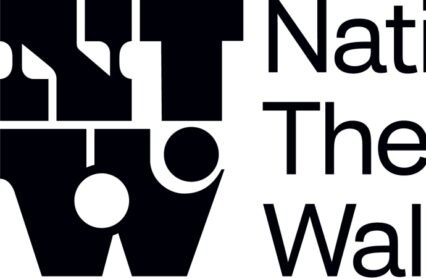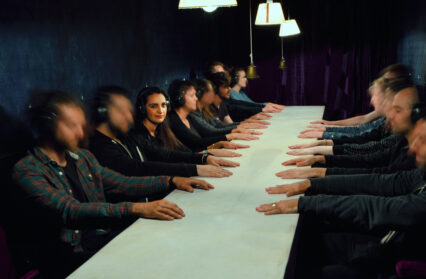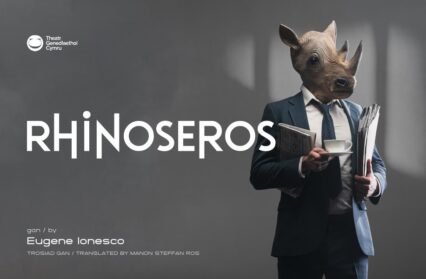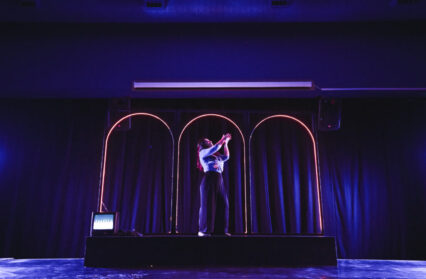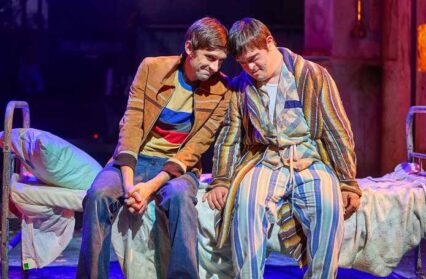David Cottis reviews the online modern-day reinvention of Oscar Wilde’s The Picture of Dorian Gray from Theatr Clwyd, featuring Joanna Lumley and Stephen Fry.
On the surface (which, according to its author, is the only place really profound people look), Oscar Wilde’s 1890 novella The Picture of Dorian Gray would seem like a natural fit for the social media world. Writing only half a decade before the first screening of moving pictures, Wilde created one of the first new myths of the modern world, in which the public face remains unaging, hiding the private passage of time. He also gave the world a new cliche – every celebrity who remains young-looking must expect, at some point, to have to field a jokey question about the portrait in their attic.
All of which makes it quite surprising that, apart from the 1945 film, the story has proved resistant to successful adaptation. Perhaps Wilde was onto something when he wrote the story as a novella rather than his usual medium of the stage; both Dorian and his picture are ideals – one of beauty, the other of decay – and a physical representation can no more capture them than a real whale can Moby Dick.
This new online adaptation, created by a consortium of out-of-London theatres and directed by Theatr Clwyd’s Tamara Harvey, updates the action to the present day – Dorian is a vlogger, Sybil Vane, the actress whom he pursues then destroys, makes her name with improbably popular TikTok videos of Shakespeare’s greatest hits. In a neat reversal of the original premise, the portrait here is a filter that maintains Dorian’s beauty on screen, while it’s his IRL face that shows the ravages of time and decadence. Interactions are mediated through phones, computer screens and security cameras, reflecting the process by which the piece was made, recorded separately by a cast who never met.
The script, by Henry Filloux-Bennett, Artistic Director of the Laurence Batley Theatre in Huddersfield, gives the impression of having been written in a bit of a hurry: he’s never very clear what he wants to say about social media, or what kind of vlogger Dorian is – sometimes he’s a male Kardashian, at others a Toby Young-style conspiracy theorist. Filloux-Bennet is also excessively willing to hitch a lift on other writers’ lines – this is a world in which characters often communicate through thuddingly obvious quotations, not just Wilde and Shakespeare, but Roald Dahl, Arthur C. Clarke, and St. Mark’s gospel (the ‘gain the whole world and lose his soul’ bit).
The cast are a mixed bag – Alfred Enoch has the most fun as Wilde’s self-portrait ‘Harry’ Wooton (though this adaptation makes him even more superfluous than he is in the original). Joanna Lumley and Stephen Fry turn up in a redundant ‘murder investigation’ framing device. The setting, in this year of lockdown, adds another egg to an already heavy pudding, and stretches credibility; where Wilde’s Dorian sees his picture age through a life of debauchery, this one hardly ever seems to leave his bedroom.
This has inevitably been a hard year for theatres, and they have coped in a range of ways – moving outside, raiding the archive, live-streaming without an audience. The Picture of Dorian Gray is a worthwhile attempt, but it mostly misses the mark as either theatre or film, and, like its protagonist, gives the impression that the real action is to be found somewhere else.
Recommended for you…
Online screenings of Theatr Clwyd’s The Picture of Dorian Gray will continue until the 31st of March. Tickets are available here.
David Cottis is a Lecturer in Scriptwriting at the University of Middlesex.


